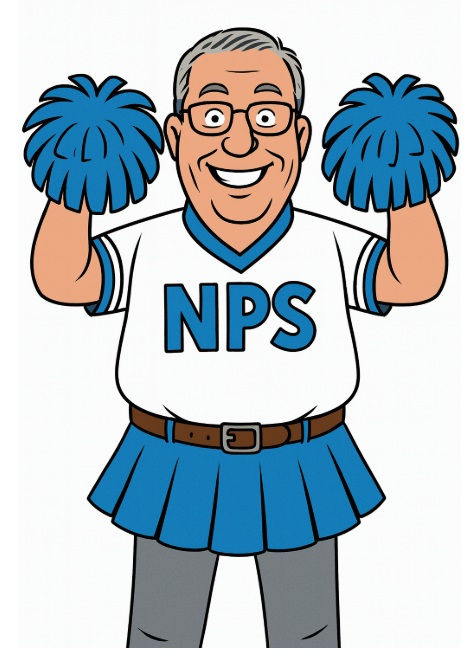So, you want to know what your customers think? (3) - What information are you looking to obtain?
- Michael Brandt

- May 7, 2020
- 7 min read
Updated: Jul 20, 2022
In the first blog, I mentioned 4 questions that you should address before starting your VoC program.
1) Is your C-suite or senior management on board with a VoC program?
2) What is it that you want to know exactly?
3) Who is going to be involved in the process?
4) What do you have in mind from a communication perspective?
In the last blog, we looked at getting the C-Suite and other important stakeholders on board. Now let’s look at the second question which is: what is it that you want to know exactly?
In one program that I was responsible for some years back, colleagues would come to me and ask me to put together a VoC survey for them. The first question I would ask, and the one that always appeared the most difficult for them to answer, was “What is it that you want to find out?” More often than not, the answer was very simple: “We want to know what our customers think of us.” That, for sure, but there needs to be more meat on that bone!
As I wrote in the first blog of the series, I am not going to discuss the various types of systems in this blog. So, I will not be discussing the advantages or drawbacks of NPS, CSAT, or Customer Effort Score for example. But, bear in mind that VoC should never be just about the score, whatever system you have decided to use. The main piece of information you should be looking for is what is driving the score. What factors in the relationship between you and your customers are making them evaluate you the way that they are? Do not focus on the score, focus on the measures required to either underpin the positive feedback or to correct the negative feedback.
There are two types of surveys: relational and transactional. What is the difference?
Relational surveys look at customers’ loyalty to a company or brand. They look at the general status of the relationship with the customer considering the overall experience and satisfaction over a specific time. Relational surveys are generally carried out at regular, pre-determined, intervals.
Transactional surveys look at the customer experience for a particular transaction/ interaction/touchpoint. Transactional surveys are far more focused and measure customer satisfaction with a specific touchpoint, allowing it to be improved to meet customer expectations. Feedback from such surveys is an important input for a customer journey mapping exercise. Surveys should be placed the whole length of the journey, thereby providing you with valuable input for the mapping exercise.
Depending on your organization, you may find it easier to start with a relational survey. Transactional surveys, as explained above, depend very much on your customer journey and the touchpoints. In large organizations with a wide range of products and business units, it may be quite a complex exercise to match transactional surveys to every unit's processes. It may be hard to get the agreement of the various units' management teams to commit to resources if they are not sure what the outcome will be and what benefits they stand to see. My experience has been that the information gleaned in relational surveys can be so powerful that the units then come asking for more detailed feedback and this is the moment to introduce the transactional survey program.
Remember, you are not just looking for negative feedback! Positive feedback is important to a) clarify what your customers think you are doing well (and you need to look for ways to build on that) and b) motivate the staff involved by showing them that their efforts are appreciated by their customers.
The Relational Survey
In a relational survey, you are looking at getting information about the relationship between yourself (your brand) and your customers. It's important to look to obtain actionable information, enabling you to go back to your customers to tell them what actions you are taking as a result of their feedback. You also want to try and limit the amount of information that you are likely to receive. Too much unstructured information will leave you wondering where to start analyzing it and what actions to start with (in other words, so-called “data paralysis”). So, the survey needs to be structured in such a way as to limit that feedback somehow and channel it in a way that highlights the most critical issues.

A relational survey can be designed in such a way that you will already have some indication of which processes are causing your customers frustration. General drivers that you can look at might be topics such as, for example, ease of doing business with your company, technical support, and problem resolution. You could also look at more brand perception-oriented topics such as the use of technology and innovation, industry and application knowledge, and if you are a project-based business, something along the lines of ability to manage complexity.
However, it is also possible to start getting some indication of process-related sentiment. Technical support and problem resolution, mentioned above, will already give you some pointers. You could also look for feedback concerning training, availability of products, and ability to deliver on time for example.
The above are just some examples, what you decide to look for feedback on will depend very much on your product type and organization. In a relational survey, try and maintain a certain altitude and avoid becoming too narrow in the descriptions of the various categories that you are looking to get feedback for. Defining them too narrowly (or defining them at all for that matter), may cause a customer to refrain from commenting because they might feel that what they want to say may not fit within the description.
Some years ago, I was carrying out an end-user survey about a tool that had been implemented within the organization 2 years earlier. One category that we had selected for feedback was "Issue Resolution". In our minds, we saw that as looking for feedback on how the support team handled complaints about the tool. However, our users interpreted it completely differently. As a result, we gathered extremely valuable information about a downstream application that had critical weaknesses that we needed to remedy quickly. Had we defined "Issue Resolution" too narrowly, we would have missed out on this important data.
The results of your relational survey should give you a clear indication of where you should prioritize your transactional surveys.
Transactional Survey
While the relational survey will tell you which areas of your operation may not be living up to customer expectations, the transactional survey should be telling you why that is and what corrective actions may be required to correct that.
Transactional surveys will give you much more granular data as they relate to the limited scope of a particular transaction. They can be for processes such as, but not limited to sales process, product quality, support quality, communication. In a project-related business, you may want to consider a survey after each milestone for example. Here also, it is important to try and glean as much information as possible regarding customer sentiment without over-complicating the survey. If you are looking at the actual purchasing operations, you might want to ask the customer about how easy it was to find the product they wanted to order, how easy it was to order, etc. But make sure that each question counts and will allow you either to gain valuable insights or take immediate actions to remedy the situation.
In a large organization, transactional surveys can be complex to implement. Processes may not be the same from one product group to another, and if you have both mass-produced products and customized, made-to-order, equipment side by side, the customer journey and touchpoints may be very different indeed. But even in cases like this, my experience has been that it is useful to look for as many commonalities as possible to allow some internal benchmarking between the units.
In any kind of survey, bear in mind that you are asking the customer a favor! You are asking them to take time out of their busy schedule to answer your questions. Consequently, it is important to ensure that every question is worthwhile and will allow you valuable insights. Naturally, if a customer feels it's a waste of his or her time, they will not bother to answer and your response rates will be low. One way to avoid that is to follow up with customers, either with a short thank you if no further action is required or to make an appointment to discuss actions arising from their feedback. If this is carried out consistently customers will quickly come to realize that they are being taken seriously and that their feedback is important to you. They will see the clear benefits of responding.
Surveying methods
Surveys can be carried out in many ways. Often companies use web-based surveys with an email invitation to participate. This is probably the most cost-effective method, as once the system has been put in place, the actual survey does not require many resources, and data can be fed straight into a data analytics dashboard. You can also arrange for the data to be linked to your CRM (such as Salesforce for example), which will allow sales staff to immediately see the status of their customers and account managers to see outstanding issues when they are planning customer visits.
Some companies survey their customers using text messages. However one has to ask oneself just how much information can be gleaned through SMS interviews? It's possible to ask very simple questions that a customer is comfortable responding to on a smart-phone keyboard. But, that seriously limits your options.
In some cases, you may want to consider personal interviews. In such cases, it is best to use neutral third parties to conduct the interview to avoid any bias. However, although the one-to-one contact may provide more in-depth information, it may also be considerably more costly.
There are now also companies that offer the possibility of getting customer sentiment data by using AI, making surveys unnecessary. Two companies that are well known for this are Tethr and Sandsiv.
I will take a deeper look at data gathering methods later in the blog series.
In any case, whatever method you choose to use, ensure that it is as least intrusive as possible and that inconvenience to the customer is minimized!

Subscribe to my blog on the main Blog page and be notified of new posts as they happen!




Comments